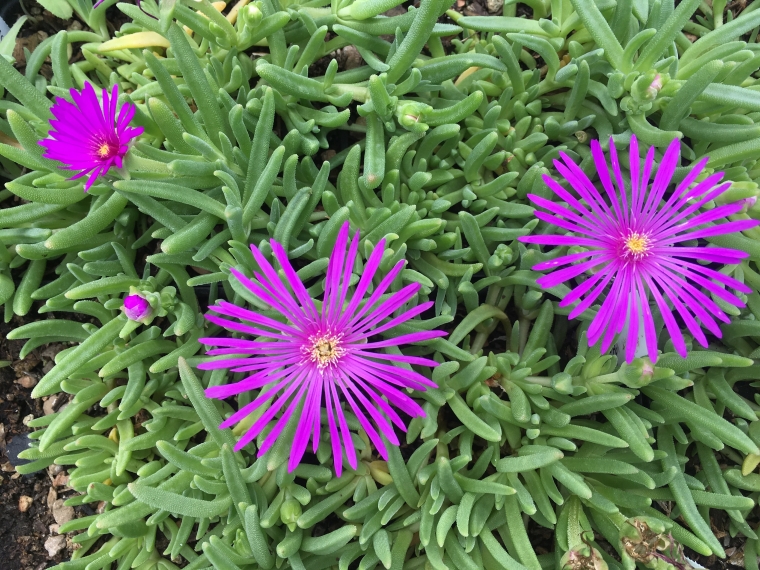At Harlequin’s Gardens one of our objectives is to offer xeriscape, drought tolerant, and lower water alternatives to what is commonly found in the horticultural trade–plants well adapted to our local conditions. Living in a predominately dry arid ecosystem where drought is common and due to climate change increasingly likely in the future, groundcovers are a great replacement for water intensive lawns common in too many local yards. Groundcovers offer many benefits and some advantages over turf. Most of them flower, which provide beauty as well as nectar and pollen for the beneficial insects. Their variety of textures provide interest when they are not flowering. They reduce evaporation, keep soil temperatures cooler in summer and reduce weeding. Some groundcovers are evergreen or have attractive winter color, and quite a few are successful in shade where most turf grass does poorly. Groundcovers are easier to maintain in narrow strips than turf, and do not require regular mowing. And many are more water-conserving than most turf grasses. The tremendous variety of textures and colors offer rich opportunities for creativity and pairing with other plants.
Groundcovers can be used in many ways. A lawn area can be greatly reduced by removing the turf from a 6′-8′ wide border around the lawn, putting in a 6″ deep edging to contain the grass and planting low-water shrubs, perennials and/or groundcovers. Groundcovers can be used around shrubs and larger perennials to provide a living mulch and a longer season of color. Evergreen groundcovers add winter interest and will continue to nourish the symbiotic mycorrhizae during the winter. Groundcovers, especially slow-growing ones make good specimen plants, and look good and often prosper growing among rocks. Groundcovers are also useful along walks and paths where we don’t want large plants hanging over the walkway.
Groundcover maintenance, of course, varies with the variety. In general, keep well weeded, especially when they are small, remove old flowers and dead material in early spring, and top-dress with a ¼” of fine compost in fall and/or spring. A light fertilization with an organic fertilizer may be beneficial. Water needs vary, but water twice as much in July and once a month in dry winters. Even though groundcovers are sometimes called “stepables”, some, like iceplants don’t tolerate being stepped on and if traffic is frequent, stones or pavers may be needed. A fine mulch is often helpful to get groundcovers established.
Further Suggested Reading:
Lawn Alternatives and Groundcovers
Testing Xeriscape Groundcovers
Xeriscape Display and Test Beds


